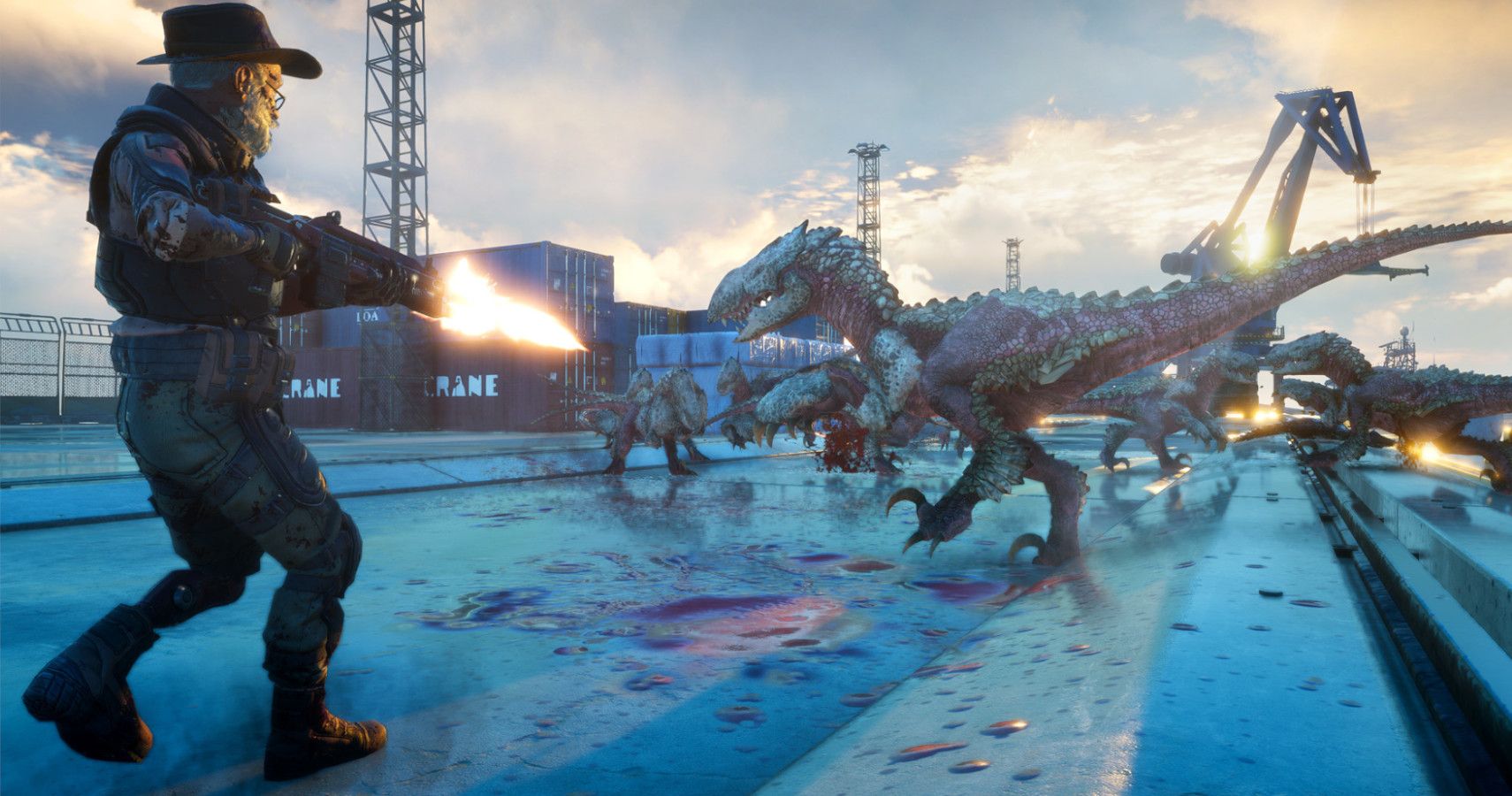

Yet the community at large can work together. Your own personal war effort may not have a huge influence on reducing a location’s threat level. It’s an intriguing concept that doubles as visual storytelling. They will actively take over other areas, raising the threat level. Inversely, I was told that the dinosaurs won’t take mass extermination lying down. With each portion of the map boasting a threat level, players can actively contribute to making an area safer. This is the War Effort: a community-driven mechanic that showcases humanity’s impact on the reptiles. From the outset, developer Systemic Reaction’s first-person shooter pushes the notion of banding together as a species to combat the dino menace.īefore you even launch into a mission, you’re shown a large world map sectioned off into different chunks.


You play as one of four human specialists sent to the surface in order to complete a variety of different missions. Set on a dinosaur infested Earth, humans have retreated to space and wage all-out war with these monsters to retake their planet. Second Extinction quickly educated me that my typical lone wolf strategy wasn’t going to fly here. I didn’t stick with my teammates during the fight. All hell broke loose, bullets flew in every direction, and I was, unsurprisingly, knocked on my virtual ass by an onslaught of teeth and claws. But this was an illusion: one quickly shattered with a deafening screech as a dozen raptors and a mutated triceratops the size of buses rushed my squad. There was a calmness to the world - as if it was posing for a photo to plaster on a postcard. Within seconds I emerged from my metal coffin, only to be greeted by a gorgeous nighttime vista of Alaskan mountain ranges. I couldn’t help but feel anxious as my drop pod crashed through the heavens.


 0 kommentar(er)
0 kommentar(er)
